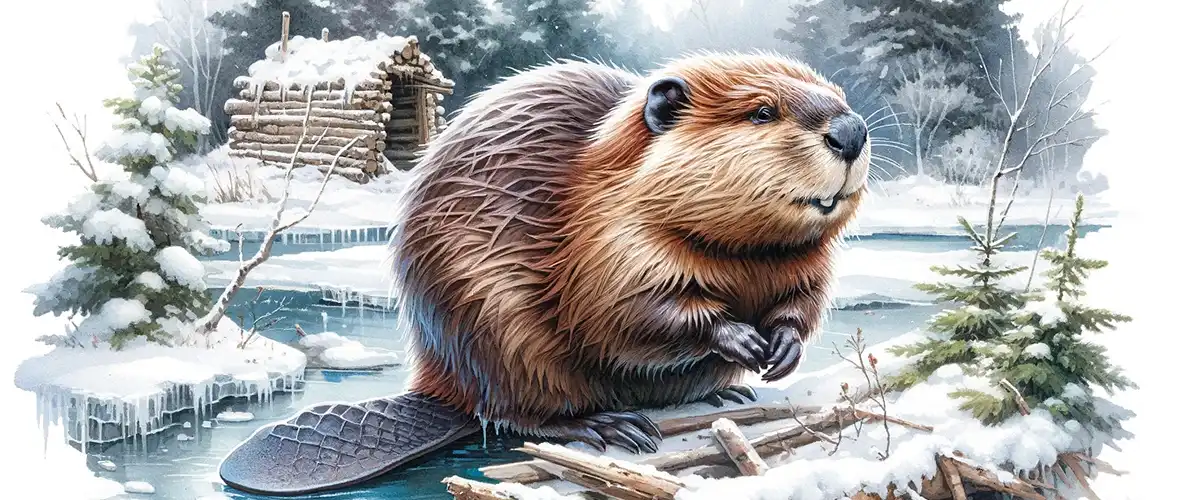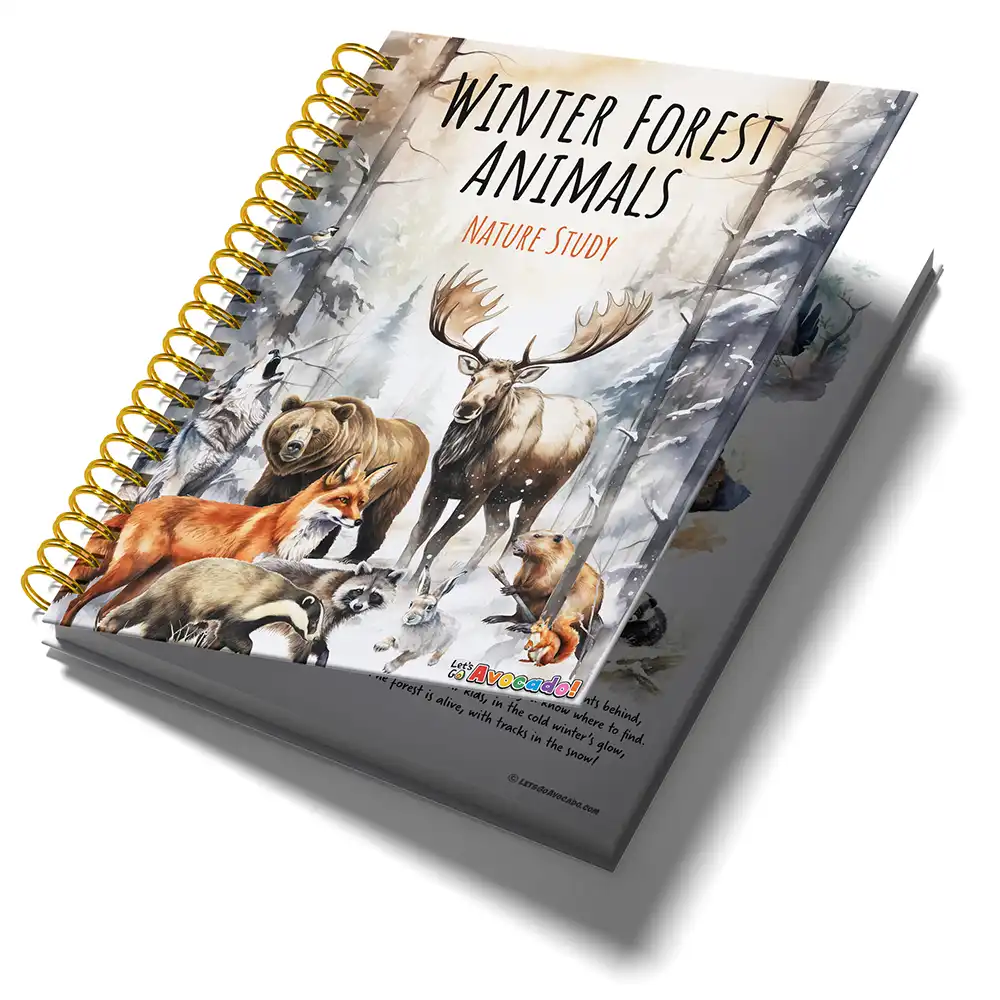This page may contain affiliate links.
Read our disclosure and privacy policy here.
As the chill of winter sets in, a transformation occurs in the habitats of one of nature’s most industrious creatures – the beaver. Known for their impressive dam-building skills and playful demeanor, beavers are more than just cute faces with big teeth. These furry engineers play a crucial role in their ecosystemsAn ecosystem is a community of living organisms, like insects and birds, and non-living components, like water and rocks, that interact with each other in a specific area. Learn More, and their winter survival activities are nothing short of amazing.
In this article, we’ll dive into the fascinating world of beavers and how they survive during the winter months. From how they prepare for the cold to what they eat when the world turns white, we’re about to uncover some cool facts about beaver winter survival skills. So, bundle up, and let’s embark on a wintry adventure to learn about beavers!
Table of Contents
Beaver Winter Survival: Ingenious Strategies in the Cold
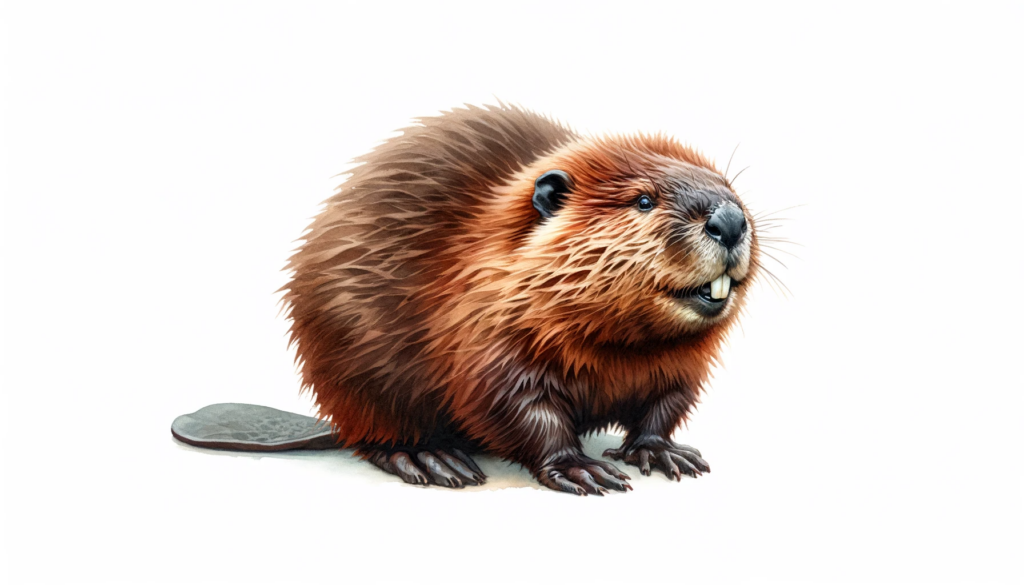
What are Beavers?
Before we delve into beaver winter survival habits, let’s get familiar with our subject – the beaver. Beavers are large, primarily nocturnalAnimals that are active during the night and rest during the day. Beavers are primarily nocturnal, doing most of their work at night., semi-aquatic rodents known for their impressive building skills. They are the second-largest rodents in the world, after the capybara. Beavers are easily recognizable by their large, flat tails, which they use for a variety of purposes, including balance when cutting trees, fat storage, and communication by slapping the water’s surface.
Beavers have dense brown fur that provides excellent insulation against cold water and winter weather. Their large, orange teeth are not just for show – they are incredibly strong and continuously grow throughout the beaver’s life, allowing them to gnaw through wood with ease.
Living in family groups, beavers are social animals. Their homes, known as lodges, are built with a keen sense of engineering. Lodges typically have underwater entrances, making it difficult for predators to invade.
Now that we know a bit more about these fascinating creatures, let’s find out how they manage to survive and thrive in the cold winter months.
Beaver Winter Survival Strategies
Despite the harsh winter conditions, beavers have developed extraordinary winter survival strategies. One of their most vital adaptations is their thick fur, which provides excellent insulation against the cold. This fur, along with a layer of fat stored in their large tails, helps beavers maintain their body temperature even in freezing waters.
The beaver’s lodge plays a critical role in their survival strategy. As temperatures drop, beavers spend the majority of their time inside these lodges, which are surprisingly warm and dry. The design of the lodge, with its compacted mud and stick walls, helps trap heat, creating a cozy environment that can be significantly warmer than the outside.
Beavers’ winter diet primarily consists of the food they’ve cached in the fall. This includes twigs, bark, and branches from trees like willow and aspen, which they store underwater near their lodges. These food caches are essential as they provide beavers with a reliable food source when the pond is frozen over.
Additionally, beavers are capable swimmers, even in icy waters. They use underwater tunnels leading from their lodges to access their food caches and occasionally venture out to forage, depending on the severity of the winter conditions.
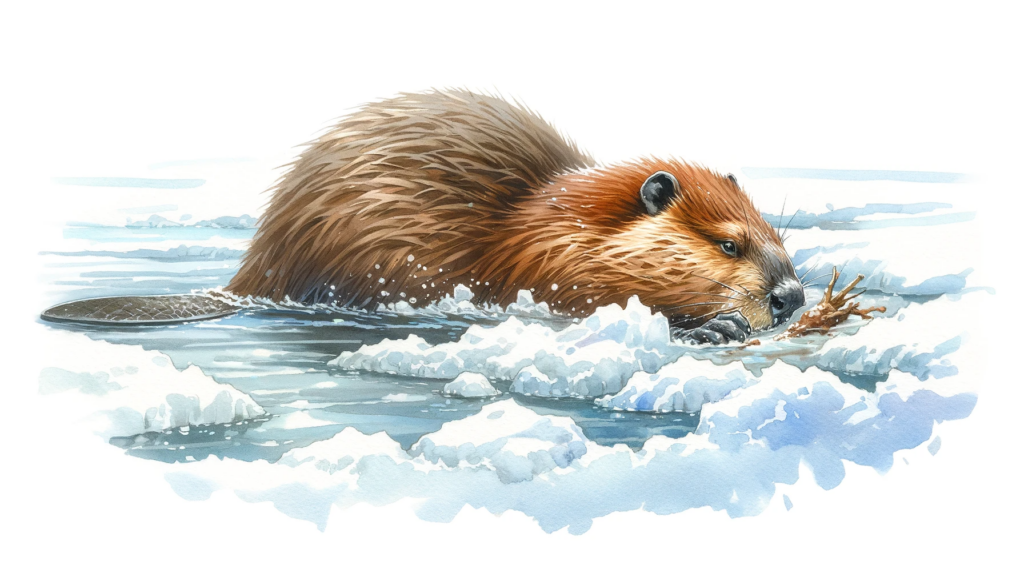
A Beaver's Winter Menu
During the frosty winter months, a beaver’s diet changes significantly. While they enjoy a variety of foods in warmer seasons, including succulent aquatic plants and greenery, their winter diet becomes more focused on what they have stored. Beavers are primarily herbivoresHerbivores are animals that eat plants as their main source of food. They are like the vegetarians of the animal kingdom. Just as you eat fruits, vegetables, and other plant-based foods, herbivores munch on leaves, flowers, grass, and other parts of plants., and in winter, their diet consists mainly of the bark, twigs, and branches they meticulously gathered and cached in the fall.
Beavers favor certain types of trees for their winter diet, such as willow, alder, birch, and poplar. These trees provide the necessary nutrients and are easier for beavers to process. The beavers access their stored food by swimming under the ice to their food caches. This underwater pantry is a critical resource, ensuring they have enough to eat when the ground is covered in snow and ice.
Interestingly, beavers do not hibernateHibernation is a remarkable survival strategy used by some animals to endure harsh winter conditions. During hibernation, these animals enter a deep, prolonged state of reduced activity, characterized by a significant drop in metabolic processes, including heart rate and body temperature, allowing them to conserve energy and survive through the challenging cold months. and remain active throughout the winter. This constant activity requires a reliable food source, and their strategic caching behavior in the fall is a testament to their forward-thinking nature.
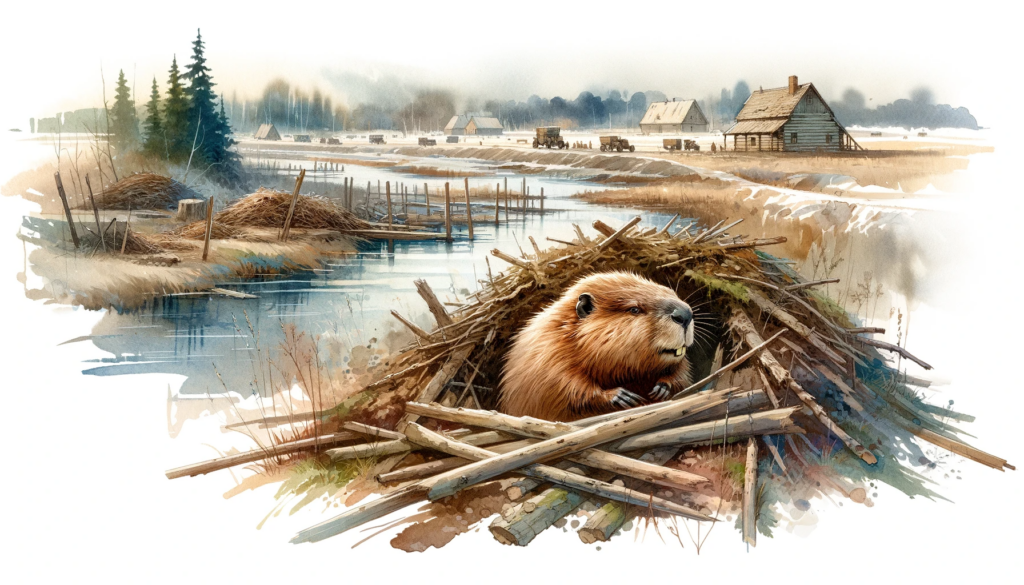
Human Impact on Beavers
While beavers are incredibly adaptable and have remarkable survival strategies, they face significant challenges due to human activities, especially in winter. One of the most pressing issues is habitat loss caused by urban development and land use changes. As humans build closer to natural habitats, beavers often find their traditional areas for foraging and lodge building disrupted by roads, buildings, and other structures.
Another challenge is the management of beavers as both fur-bearers and predator species in certain regions. For example, in Oregon, the fur-bearer trapping season overlaps with the beaver mating season, adding stress and pressure to the beaver populations during a critical time of their lifecycle.
ConservationThe act of protecting and preserving natural resources and the environment. Conservation efforts are important to protect beavers and their habitats. efforts are crucial to mitigate these impacts. Organizations and wildlife teams work to remove obstacles to beaver survival, support coexistence when conflicts arise, and implement measures like exclusion fencing and flow device installation. These efforts help maintain a balance between human interests and the well-being of beaver populations.
By understanding the impact of our actions on beavers and their habitats, we can take steps towards more sustainable coexistence with these fascinating creatures.
Interesting Beaver Facts
Let’s wrap up our journey into the world of beavers with some fascinating and fun facts about these incredible animals:
Amazing Builders: Beavers are known as nature’s engineers. They can change entire landscapes by building dams and creating wetlands, which benefit many other species.
Tail Tales: A beaver’s tail is not just for swimming. It serves as a fat storage, a balance tool when they are cutting trees, and a communication device. Beavers slap their tails on the water surface to warn others of danger.
Tooth Truths: Beavers have very strong, continuously growing teeth. Their orange teeth are strengthened by iron, which helps them chew through tough wood.
Family Matters: Beavers are monogamousWhen two animals mate with each other exclusively. Beavers live in monogamous pairs, meaning they have only one mate at a time. and live in close-knit family units. The young beavers, called kits, stay with their parents for about two years.
Winter Workers: Unlike many animals, beavers do not hibernate in winter. They stay active, living off their stored food and occasionally venturing out to forage.
Eco-Contributors: Beaver activities, like dam building, play a crucial role in maintaining healthy ecosystems. They help create habitats for other species and contribute to the overall biodiversityBiodiversity refers to the variety of living things in an ecosystem. The more biodiversity there is in an ecosystem, the healthier and stronger it is. of their environment.
Science Topics
Beaver Behavior and Adaptations in Winter
How do beavers prepare for winter, and why is this preparation important for their survival?
- What kind of food do beavers store for winter, and how do they store it?
- How does a beaver’s lodge help them during the cold winter months?
- Why don’t beavers hibernate like some other animals?
The Role of Beavers in the Ecosystem
Why are beavers often called ‘nature’s engineers’?
- How do beaver dams affect other animals and plants in their habitat?
- Can you think of ways beavers help maintain the health of rivers and wetlands?
- Why is it important to protect beaver habitats from human activities?
Unique Characteristics of Beavers
What are some unique physical features of beavers, and how do these features help them?
- How do beavers use their tails in their daily lives?
- Why are a beaver’s teeth so strong, and what makes them different from other animals’ teeth?
- How do beaver families live together, and what can we learn from their social behavior?

There’s a lot to explore right where we are, in our own neighborhoods and backyards! Join us while we get off the couch and explore the everyday wonders of nature, science, space, engineering, art, and anything else we stumble upon during on our adventures.


